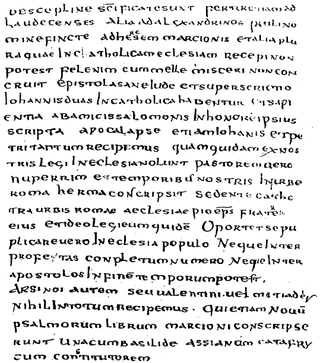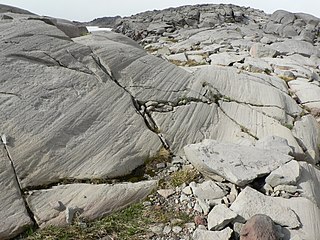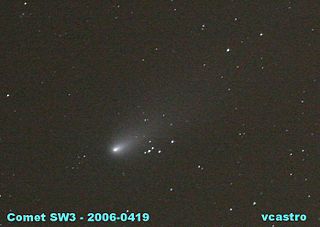| Fragmented | ||||
|---|---|---|---|---|
 | ||||
| Studio album by | ||||
| Released | 2006 | |||
| Length | 60:44 | |||
| Label | Terno | |||
| Producer | Up Dharma Down Toti Dalmacion | |||
| Up dharma Down chronology | ||||
| ||||
Fragmented is the debut album from the Filipino independent band Up Dharma Down.
| Fragmented | ||||
|---|---|---|---|---|
 | ||||
| Studio album by | ||||
| Released | 2006 | |||
| Length | 60:44 | |||
| Label | Terno | |||
| Producer | Up Dharma Down Toti Dalmacion | |||
| Up dharma Down chronology | ||||
| ||||
Fragmented is the debut album from the Filipino independent band Up Dharma Down.
| No. | Title | Length |
|---|---|---|
| 1. | "Layag" (literal English translation "Voyage") | 4:09 |
| 2. | "Maybe" | 3:52 |
| 3. | "Lazy Daisy" | 3:55 |
| 4. | "We Give In Sometimes" | 4:47 |
| 5. | "Oo" (literal English translation "Yes") | 3:59 |
| 6. | "Fragmented" (Instrumental) | 1:08 |
| 7. | "June" | 4:34 |
| 8. | "Sleeptalk" | 7:04 |
| 9. | "Pag-Agos" (literal English translation "Flow") | 3:22 |
| 10. | "Broken Mirrors and Screaming Turtles" (Instrumental) | 1:39 |
| 11. | "Malikmata" (literal English translation "Mirage") | 5:07 |
| 12. | "The World Is Our Playground and We Will Always Be Home" | 6:28 |
| 13. | "Oo (Fragmented Version)" (Bonus track) | 2:59 |
| 14. | "Hiwaga" (Bonus track, literal English translation "Mystery") | 4:06 |
| 15. | "Lazy Daisy (Ascolto Remix)" (Bonus track) | 4:35 |

In Greek mythology, Cerberus, often referred to as the hound of Hades, is a multi-headed dog that guards the gates of the Underworld to prevent the dead from leaving. He was the offspring of the monsters Echidna and Typhon, and was usually described as having three heads, a serpent for a tail, and snakes protruding from his body. Cerberus is primarily known for his capture by Heracles, the last of Heracles' twelve labours.

Heraclitus was an ancient Greek pre-Socratic philosopher from the city of Ephesus, which was then part of the Persian Empire.

Internet Protocol version 4 (IPv4) is the fourth version of the Internet Protocol (IP). It is one of the core protocols of standards-based internetworking methods in the Internet and other packet-switched networks. IPv4 was the first version deployed for production on SATNET in 1982 and on the ARPANET in January 1983. It is still used to route most Internet traffic today, even with the ongoing deployment of Internet Protocol version 6 (IPv6), its successor.

Nuclear fission is a reaction in which the nucleus of an atom splits into two or more smaller nuclei. The fission process often produces gamma photons, and releases a very large amount of energy even by the energetic standards of radioactive decay.

Sappho was an Archaic Greek poet from Eresos or Mytilene on the island of Lesbos. Sappho is known for her lyric poetry, written to be sung while accompanied by music. In ancient times, Sappho was widely regarded as one of the greatest lyric poets and was given names such as the "Tenth Muse" and "The Poetess". Most of Sappho's poetry is now lost, and what is extant has mostly survived in fragmentary form; only the Ode to Aphrodite is certainly complete. As well as lyric poetry, ancient commentators claimed that Sappho wrote elegiac and iambic poetry. Three epigrams formerly attributed to Sappho are extant, but these are actually Hellenistic imitations of Sappho's style.

Southern blot is a method used for detection and quantification of a specific DNA sequence in DNA samples. This method is used in molecular biology. Briefly, purified DNA from a biological sample is digested with restriction enzymes, and the resulting DNA fragments are separated by using an electric current to move them through a sieve-like gel or matrix, which allows smaller fragments to move faster than larger fragments. The DNA fragments are transferred out of the gel or matrix onto a solid membrane, which is then exposed to a DNA probe labeled with a radioactive, fluorescent, or chemical tag. The tag allows any DNA fragments containing complementary sequences with the DNA probe sequence to be visualized within the Southern blot.

The Dead Sea Scrolls, also called the Qumran Caves Scrolls, are a set of ancient Jewish manuscripts from the Second Temple period. They were discovered over a period of 10 years, between 1946 and 1956, at the Qumran Caves near Ein Feshkha in the West Bank, on the northern shore of the Dead Sea. Dating from the 3rd century BCE to the 1st century CE, the Dead Sea Scrolls are considered to be a keystone in the history of archaeology with great historical, religious, and linguistic significance because they include the oldest surviving manuscripts of entire books later included in the biblical canons, along with extra-biblical and deuterocanonical manuscripts that preserve evidence of the diversity of religious thought in late Second Temple Judaism. At the same time, they cast new light on the emergence of Christianity and of Rabbinic Judaism. Almost all of the 15,000 scrolls and scroll fragments are held in the Shrine of the Book at the Israel Museum, located in the city of Jerusalem. The Israeli government's custody of the Dead Sea Scrolls is disputed by Jordan and the Palestinian Authority on territorial, legal, and humanitarian grounds—they were mostly discovered following the Jordanian annexation of the West Bank and were acquired by Israel after Jordan lost the 1967 Arab–Israeli War—whilst Israel's claims are primarily based on historical and religious grounds, given their significance in Jewish history and in the heritage of Judaism.

Lucius Cassius Dio, also known as Dio Cassius, was a Roman historian and senator of maternal Greek origin. He published 80 volumes of the history of ancient Rome, beginning with the arrival of Aeneas in Italy. The volumes documented the subsequent founding of Rome, the formation of the Republic, and the creation of the Empire up until 229 AD, during the reign of Severus Alexander. Written in Ancient Greek over 22 years, Dio's work covers approximately 1,000 years of history. Many of his 80 books have survived intact, or as fragments, providing modern scholars with a detailed perspective on Roman history.

The Muratorian fragment, also known as the Muratorian Canon, is a copy of perhaps the oldest known list of most of the books of the New Testament. The fragment, consisting of 85 lines, is a Latin manuscript bound in a roughly 8th-century codex from the library of Columbanus's monastery at Bobbio Abbey; it contains features suggesting it is a translation from a Greek original written about 170. Other scholars suggest it might have been originally written as late as the 4th century, although this is not the consensus opinion. Both the degraded condition of the manuscript and the poor Latin in which it was written have made it difficult to translate. The beginning of the fragment is missing, and it ends abruptly. The fragment consists of all that remains of a section of a list of all the works that were accepted as canonical by the churches known to its original compiler.

Habitat fragmentation describes the emergence of discontinuities (fragmentation) in an organism's preferred environment (habitat), causing population fragmentation and ecosystem decay. Causes of habitat fragmentation include geological processes that slowly alter the layout of the physical environment, and human activity such as land conversion, which can alter the environment much faster and causes the extinction of many species. More specifically, habitat fragmentation is a process by which large and contiguous habitats get divided into smaller, isolated patches of habitats.

Glacial striations or striae are scratches or gouges cut into bedrock by glacial abrasion. These scratches and gouges were first recognized as the result of a moving glacier in the late 18th century when Swiss alpinists first associated them with moving glaciers. They also noted that if they were visible today that the glaciers must also be receding.

73P/Schwassmann–Wachmann, also known as Schwassmann–Wachmann 3 or SW3 for short, is a periodic comet that has a 5.4 year orbital period and that has been actively disintegrating since 1995. When it came to perihelion in March 2017, fragment 73P-BT was separating from the main fragment 73P-C. Fragments 73P-BU and 73P-BV were detected in July 2022. The main comet came to perihelion on 25 August 2022, when the comet was 0.97 AU from the Sun and 1 AU from Earth. It will be less than 80 degrees from the Sun from 25 May 2022 until August 2023. On 3 April 2025 it will make a modest approach of 0.3 AU to Jupiter. 73P will next come to perihelion on 23 December 2027 when it will be 0.92 AU from the Sun and on the far side of the Sun 1.9 AU from Earth.
Galactosidases are enzymes that catalyze the hydrolysis of galactosides into monosaccharides.

Fragmentation is the process by which the casing, shot, or other components of an anti-personnel weapon, bomb, barrel bomb, land mine, IED, artillery, mortar, tank gun, or autocannon shell, rocket, missile, grenade, etc. are dispersed and/or shattered by the detonation of the explosive filler.
Caius, Presbyter of Rome was a Christian author who lived and wrote towards the beginning of the 3rd century. Only fragments of his works are known, which are given in the collection entitled The Ante-Nicene Fathers. However, the Muratorian fragment, an early attempt to establish the canon of the New Testament, is often attributed to Caius and is included in that collection.

In computing, an arithmetic logic unit (ALU) is a combinational digital circuit that performs arithmetic and bitwise operations on integer binary numbers. This is in contrast to a floating-point unit (FPU), which operates on floating point numbers. It is a fundamental building block of many types of computing circuits, including the central processing unit (CPU) of computers, FPUs, and graphics processing units (GPUs).
A uniform resource locator (URL), colloquially known as an address on the Web, is a reference to a resource that specifies its location on a computer network and a mechanism for retrieving it. A URL is a specific type of Uniform Resource Identifier (URI), although many people use the two terms interchangeably. URLs occur most commonly to reference web pages (HTTP/HTTPS) but are also used for file transfer (FTP), email (mailto), database access (JDBC), and many other applications.

P/2013 R3 (Catalina–PanSTARRS) was an active main-belt asteroid that disintegrated from 2013 to 2014 due to the centrifugal breakup of its rapidly-rotating nucleus. It was discovered by astronomers of the Catalina and Pan-STARRS sky surveys on 15 September 2013. The disintegration of this asteroid ejected numerous fragments and dusty debris into space, which temporarily gave it a diffuse, comet-like appearance with a dust tail blown back by solar radiation pressure. Observations by ground-based telescopes in October 2013 revealed that P/2013 R3 had broken up into four major components, with later Hubble Space Telescope observations showing that these components have further broken up into at least thirteen smaller fragments ranging 100–400 meters (330–1,310 ft) in diameter. P/2013 R3 was never seen again after February 2014.